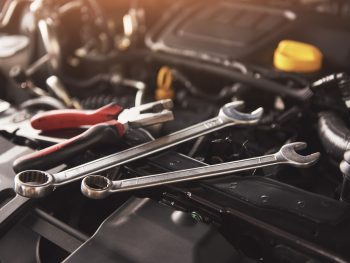The average age of fleet cars and vans continued to rise in 2023, resulting in higher service and repair costs and more downtime.

For the whole of last year, the average age of a fleet car at the point of servicing, maintenance or repair (SMR) was 3.00 years, according to new Epyx data.
That’s up from 2.86 years in 2022, 2.74 in 2021, 2.55 in 2020 and 2.40 in 2019.
For vans, the corresponding figures were 3.58 years old in 2023, 3.39 in 2022, 3.25 in 2021, 3.16 in 2020 and 3.03 in 2019.
Epyx – which complied the figures from its 1link Service Network platform – said the “ongoing ageing” of vehicles was directly related to the pandemic and accompanying vehicle shortages. It also warned that it would take some time for the metric to stabilise and start to fall.
Tim Meadows, chief commercial officer, elaborated: “This has very real repercussions for vehicle operations in practical terms. Older vehicles, especially those with higher mileages, will always tend to need more SMR. They especially have an increased propensity for major components to fail, such as gearboxes. This is not just expensive, but means cars and vans spend more time in workshops, unavailable for use.”
This is borne out by the Epyx data. Vehicle offroad times – the time between when a car or van enters a workshop and is finally repaired – have increased. In 2023, the average was 1.91 days compared to 1.74 in 2022 and 1.63 in 2021.
Also, there has been an increase in lead times – the average time between when a company car or van booking was created to when the vehicle went in for work – from 11.87 days in 2021 to 12.92 in 2022 to 13.74 in 2023.
Meadows continued: “Because fleet vehicles are generally needing more SMR as they age, there is more downtime. Again, this is just an unavoidable effect of operating ageing cars and vans.
“It also means providers of SMR are under pressure to meet the needs of these older fleets. It is a question of an increased degree of demand meeting a level of capacity that is largely unchanged, and lead times are continuing to rise.”
Key advice for fleets is to proactively examine their SMR strategies regularly to extract the maximum useability and value from older fleet assets.
“Fleets are very much in a position where the cost of parts and labour is rising, while their need for SMR is also increasing thanks to these ageing fleets. We’re engaged in ongoing conversations with many of our customers about the best ways that our technology can be used to minimise spending in this area as much as possible and there are many interesting and effective measures being put in place,” Meadows finished.

